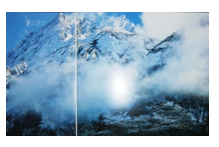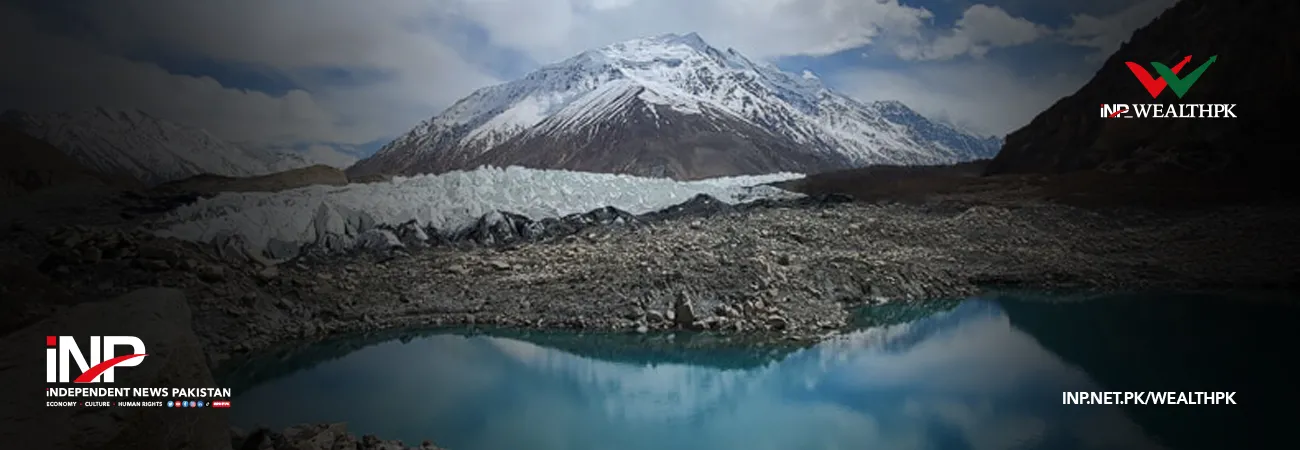INP-WealthPk
Faiza Tehseen
Glacier grafting can help Pakistan retain the ecology of its northern areas and meet the growing water needs for household and agriculture use.

“Glacier grafting can help overcome water scarcity and save the country from the adverse impacts of climate change,” emphasised Dr Zakir Hussain Zakir, Director of Planning and Development at the University of Baltistan-Skardu (UOBS). Talking to WealthPK, Zakir, who is also an expert in glacier grafting, said glacier melting was adversely affecting the country’s economy, resulting in reduced agricultural land and water scarcity. “Pakistan is one of the most water-stressed countries and the rapid glacier melting is adding to the issue. Water scarcity is also a concern in the mountainous areas, where natural springs, rain, snow and glaciers are the main sources of water,” he said. Rapid deforestation in these areas had increased temperature, accelerated snow melting and gradually depleted water sources. He said with the establishment of UOBS in 2018, its environmental experts took the initiative of glacier grafting on scientific lines. Dr Zakir said he was appointed as the team leader and principal investigator to study some of the glaciers grafted by the local community. “The team surveyed them at different places and gathered primary data and information to prepare a proper case study, whose outcomes were positive.”
Zakir said with the coordination of different government, non-government, international organisations and local communities, UOBS successfully grafted its first glacier in 2019 in Kowardo area and the second in Siksa in 2021. “During the same year, we also re-grafted a glacier in Chunda area, which had lost its tail about one and a half kilometres since 1970. It is expected to mature within two or three decades and may link with other glaciers.” He said in 2022, another glacier grafting at Kuru was done. “And during October this year, a new glacier was grafted in Machlu.” Concluding the discussion, Zakir recommended that ice grafting be performed in other areas of Pakistan located at standard altitudes to address climate change and water scarcity. Glacier grafting has traditionally been done in Gilgit-Baltistan, but of late, the technique has been abandoned. It is a long-term initiative by which human-made glaciers come into being. Glacier grafting helps in creating water reservoirs, retaining temperatures and reviving the melting glaciers. Mostly glacier grafting is used to create the ice masses that may turn into glaciating stock as well. For glacier grafting, site selection is a special parameter.
Ideally, with the availability of permafrost, it must be performed at a location at an altitude of more than 4,000 meters and a soil temperature below 0ᵒ Celsius, facing north, and with the least sun span and high exposure to spring and summer wind for ice-hardening. Glacier grafting is done only in October. A terrain with the debris of medium-sized stones and boulders is selected for glacier breeding or glaciation. It can be a naturally occurring cave or a purposely built freezing room. This place is also called the Bed of Birth or Ice Well. Initially, walls and shades may also be built to protect the glacier from the sun. It is not easy for a glacier to root or regrow quickly as it takes a long time. Only 30% chances exist for a baby glacier to survive. If a newly-grafted glacier retains for its first anniversary, then it can be said that it will survive further. According to local beliefs, baby glacier takes a Loscor (a span of 11 years in the Balti language) to root and another Loscor to shoot and then it takes its way to grow. The local people also call the glacier grafting ‘the glacier marriage’. Traditionally, special rituals were performed before and at the time of glacier grafting. Regular visiting is also forbidden for the first five years to protect the emerging glacier.
Credit: INP-WealthPk













